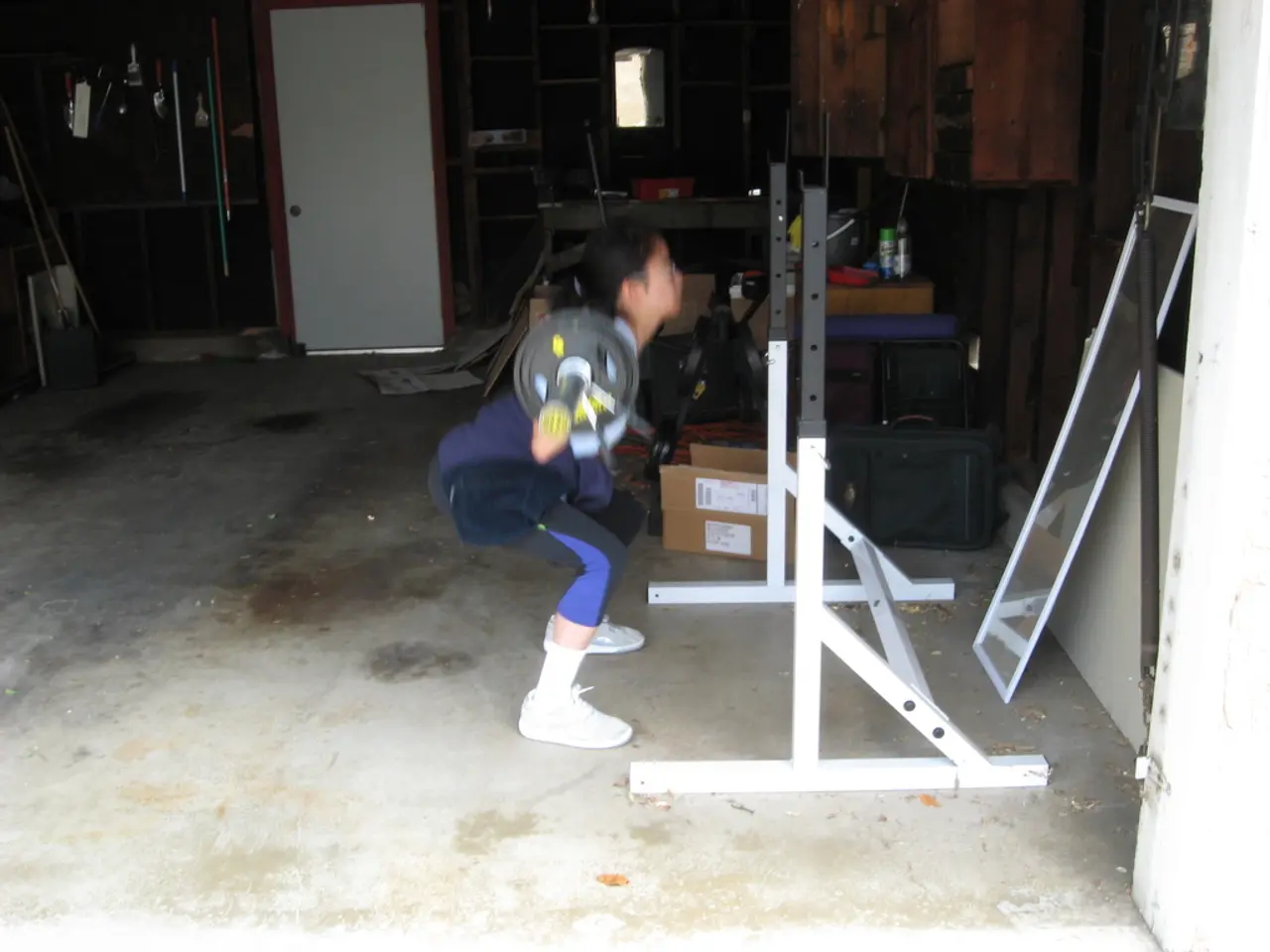Working Out with a Twist: The Advantages of Low-Intensity Interval Training (LIIT) Exercise Routine
Low-Intensity Interval Training (LIIT) and High-Intensity Interval Training (HIIT) are two contrasting workout approaches that cater to different fitness goals and abilities. Both methods have gained popularity for their effectiveness in improving overall health and fitness, but they differ significantly in intensity levels and duration.
Low-Intensity Interval Training (LIIT) is a workout approach that involves exercising for longer periods at a low to moderate-intensity level, with built-in recovery breaks. Unlike its more intense cousin, LIIT does not require the grueling survival test-like nature of some traditional workout methods. During a LIIT workout, one can expect to keep their heart rate in zone 2, or at roughly 60% to 70% of the maximum exercise rate. This means that while you are exerting yourself, you should still be able to talk and carry on a conversation instead of being out of breath.
In contrast, HIIT sessions are shorter due to the high physical demands. During a HIIT workout, one can expect to be out of breath and have their heart rate hit zone 4 or zone 5, approaching the maximum exercise rate. HIIT workouts are performed at maximum intensity, which can be demanding on the body and heart. As a result, sessions tend to be shorter to allow for adequate recovery and to avoid excessive strain on the body.
Exercise physiologist Ben Kuharik discusses LIIT, stating that it offers several benefits, including minimal recovery time, reduced injury risk, weight management, heart health, improved mood, brain boost, and accessibility for all fitness levels. LIIT workouts can be adapted to various exercise activities, such as running, walking, cycling, rowing, and weightlifting.
The key difference between LIIT and HIIT lies primarily in the intensity level and duration of the workouts. HIIT involves exercising at maximum intensity levels, pushing you to reach near your maximum heart rate zones (zone 4 or 5). This means you exert yourself very hard during the work intervals, leading to muscle fatigue and recruiting fast-twitch muscle fibres that promote strength and muscle growth.
LIIT, in contrast, is performed at a lower intensity level, which is more sustainable and less taxing on the heart and muscles. It focuses on moderate effort where you are breathing harder but still able to maintain the activity for longer. LIIT workouts can help one reach the recommended weekly goal of 150 minutes of heart-pumping aerobic exercise. Occasional LIIT sessions can also benefit one even if they do HIIT workouts, to help the body recover.
In summary, HIIT is short, intense bursts of maximum effort that improve strength and cardiovascular fitness efficiently but are demanding on the body. LIIT, on the other hand, involves longer, moderate-intensity intervals that are gentler, safer, and effective for calorie burning and overall endurance. Both HIIT and LIIT workouts can improve key fitness factors, but in different ways. HIIT typically offers more for building muscle and strength, while LIIT may burn more calories given the longer duration of the workouts.
Regardless of which approach one chooses, staying active is crucial for overall health. Whether you're a beginner or a seasoned athlete, incorporating either LIIT or HIIT into your workout routine can help maintain an active lifestyle and reap the numerous benefits that regular exercise provides.
[1] Mayo Clinic. (2021). High-Intensity Interval Training (HIIT): What You Need to Know. [online] Available at: https://www.mayoclinic.org/healthy-lifestyle/fitness/in-depth/high-intensity-interval-training/art-20115801
[2] American Heart Association. (2021). High-Intensity Interval Training (HIIT): What You Need to Know. [online] Available at: https://www.heart.org/en/healthy-living/fitness/exercise-and-physical-activity/high-intensity-interval-training-hiit
[3] Cleveland Clinic. (2021). High-intensity interval training (HIIT). [online] Available at: https://my.clevelandclinic.org/health/articles/17057-high-intensity-interval-training-hiit
[4] American Council on Exercise. (2021). Low-Intensity Interval Training (LIIT): What You Need to Know. [online] Available at: https://www.acefitness.org/education-and-resources/professional/expert-articles/3021/low-intensity-interval-training-liit-what-you-need-to-know/
- Integrating Low-Intensity Interval Training (LIIT) into a health-and-wellness lifestyle can offer numerous benefits, such as reduced injury risk, weight management, improved mood, and heart health, making it accessible for all fitness levels.
- Science has shown that both LIIT and fitness-and-exercise methods like High-Intensity Interval Training (HIIT) can significantly improve overall health and fitness, but their differences in intensity and duration make them suitable for distinct fitness goals and abilities.
- Home-and-garden enthusiasts, too, can reap the benefits of LIIT as it can be adapted to a variety of exercise activities such as running, walking, cycling, rowing, and weightlifting, allowing for a holistic approach to health and wellness.




